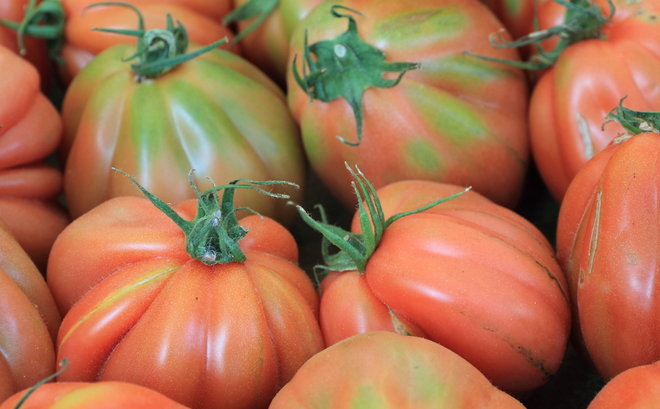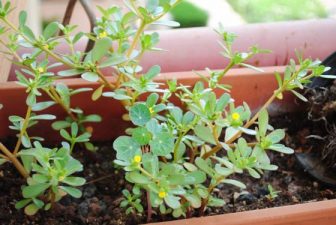Experienced cooks know that vegetables that come into season together often cook up well together. A perfect example for July produce is tomatoes and eggplants. Both have been available throughout the spring and early summer, but it’s right now that you can find the baladi (heirloom) varieties. See our baba ganoush recipe with a baladi eggplant here. And which vegetables go together more naturally than fat, flavorful baladi tomatoes and eggplants?
Try our recent baked eggplant with tomato sauce dish.
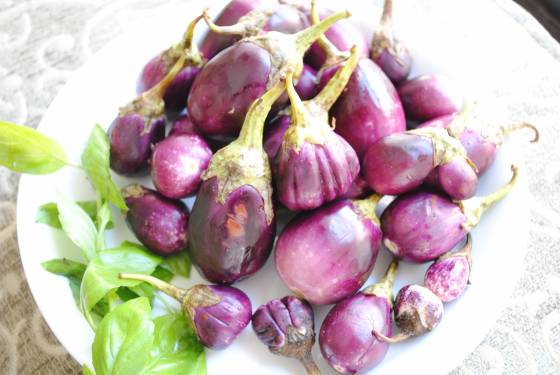
Take into account how produce wilts in the Middle Eastern summer, and go shopping in the morning. The firm, purple eggplant of the morning might be buckled and full of soft brown spots by afternoon.
As for storage, almost everything stays fresh in the refrigerator for a week, but many fruits lose their flavor after a couple of days’ refrigeration, especially fruit that’s been sliced. Try to buy whole melons for that reason, and if you must bring home only a half or a quarter, eat it up in 24 hours or your purchase will have gone to waste.
Fruit: All the local melons are full, fat, and dripping with juice. There might be heirloom near where you live, although it’s the Arab markets that usually have them. Every color and size of plum is out in the markets.
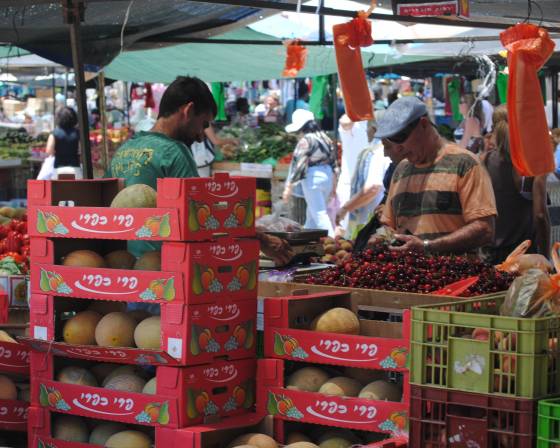
Peaches and nectarines are splendid right now. Mangoes are ripe and ready. Why not cook up a peach jam or mango chutney? Keep an eye out for prickly pears, which will be ripe by the end of the month.
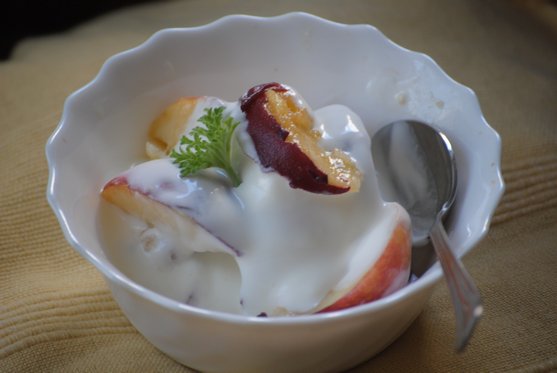
Figs are very good this year. Fresh figs are an excellent quick summer dessert. Lemons and oranges are available, but not at their best. Grapes of all varieties are abundant and reasonably priced. Many varieties of apples are ready for eating now.
Vegetables: July’s tomatoes are excellent. See our June seasonal produce post about tomatoes and suggestions for their use.
White and red cabbages are full and firm and worth buying, but broccoli and cauliflowers are looking sad.
Sweet corn is worth buying now, and so sweet that a steamed cob tastes like you cooked it with sugar. String and wax beans and okra are in season, but never very cheap.
Fennel, red radishes, beets, and bell peppers of every color are good, with average prices. Getting back to eggplants, now is the time for the baby eggplants so good for pickling.
Kohlrabi, that knobby, pale-green root, is tender and young, very good peeled, sliced thin and doused with lemon juice and olive oil. Other root vegetables continue firm and full: beets, carrots, celeriac, parsley root, and potatoes. Sighted at a local market were baladi cucumbers, which are pale and fuzzy.
Winter onions tend to be small, thin, and sprouty, often with a rotten core. Come hot weather, the onions take beautiful shape again. If you’re fond of roasted or stuffed onions, there are fat, golden ones going cheap now.
Zucchinis, both pale and dark green, are cheap and abundant. Stuffed zucchinis, Lebanese style, are delicious! Farm-grown mushrooms are available all the year, and look especially tempting now.

Herbs: All the culinary herbs are in full force this time of the year. Basil, fenugreek, parsley, cilantro, chives, and scallions can be bought in bunches. Celery stalks are never big at this time of year, but flavorful all the same.
You will also see tarragon, rosemary, thyme, za’atar, lemon thyme and oregano.Hot peppers of all sizes and colors are very much in season, and very hot!
Lettuces, spinach, Swiss chard, and leeks are in, as are endives and asparagus.
Forager’s notes: There isn’t much difference from year to year in the searing Middle Eastern summers. As in June, St. John’s Wort is blooming now. Purslane, summer’s best wild vegetable, is everywhere now, and even sold in farmer’s markets, which is sort of silly, considering how much you can gather yourself for free (see our purslane recipe here).
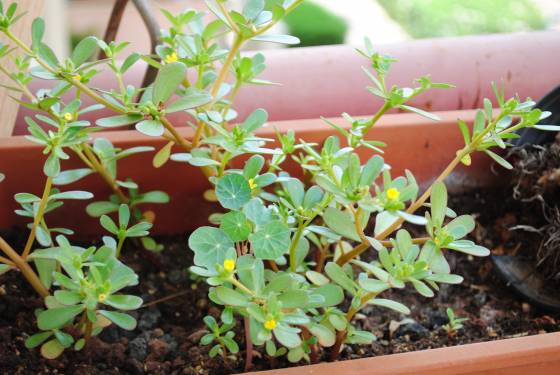
Gather caper buds and fruit for pickling now. Asiatic day flowers, with their pretty blue blooms, are thriving, and make a nice pot herb.
Lemon and orange leaves make a good flavor wrap for baked meat or chicken patties. They aren’t edible themselves, but will release their fragrant essential oils when heated, perfuming your food.
Lemon and kumquat trees are fruiting again, but their fruit will need another few weeks to grow to market size and ripeness.
The perennial olive trees offer silvery-green leaves for a medicinal, blood pressure-lowering tea. Olive leaves are also quite antibiotic in effect, as tea. A teaspoon of dried leaves per cup of boiling water, steeped 20 minutes, covered, three times a day.
Seasonal recipes from the Middle East on Green Prophet:
- Watermelon Rind Jam
- Iraqi Stuffed Grape Leaves
- Mafroum, Moroccan Stuffed Potatoes
- Cool and Hot Almond Milk

